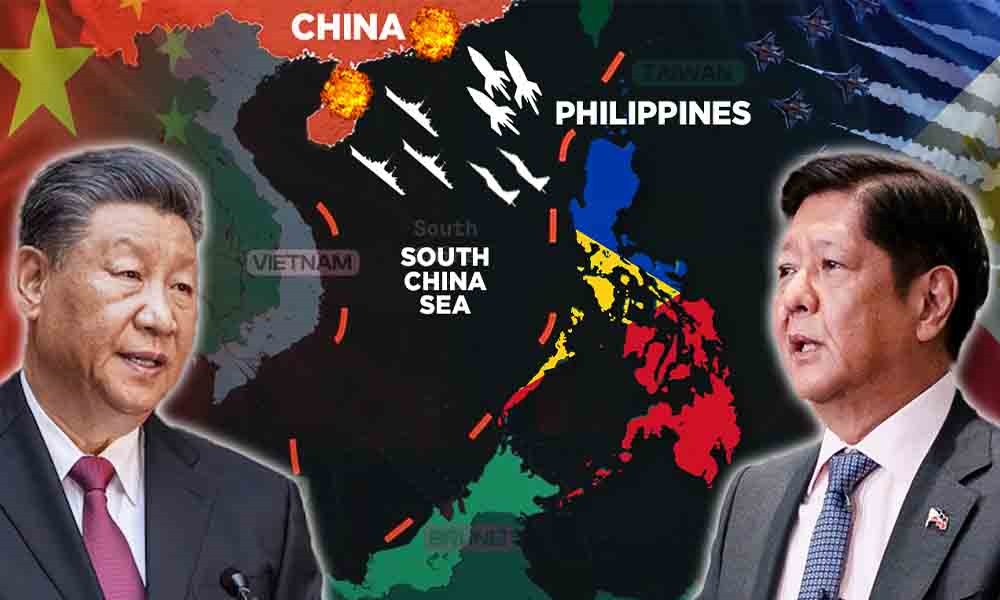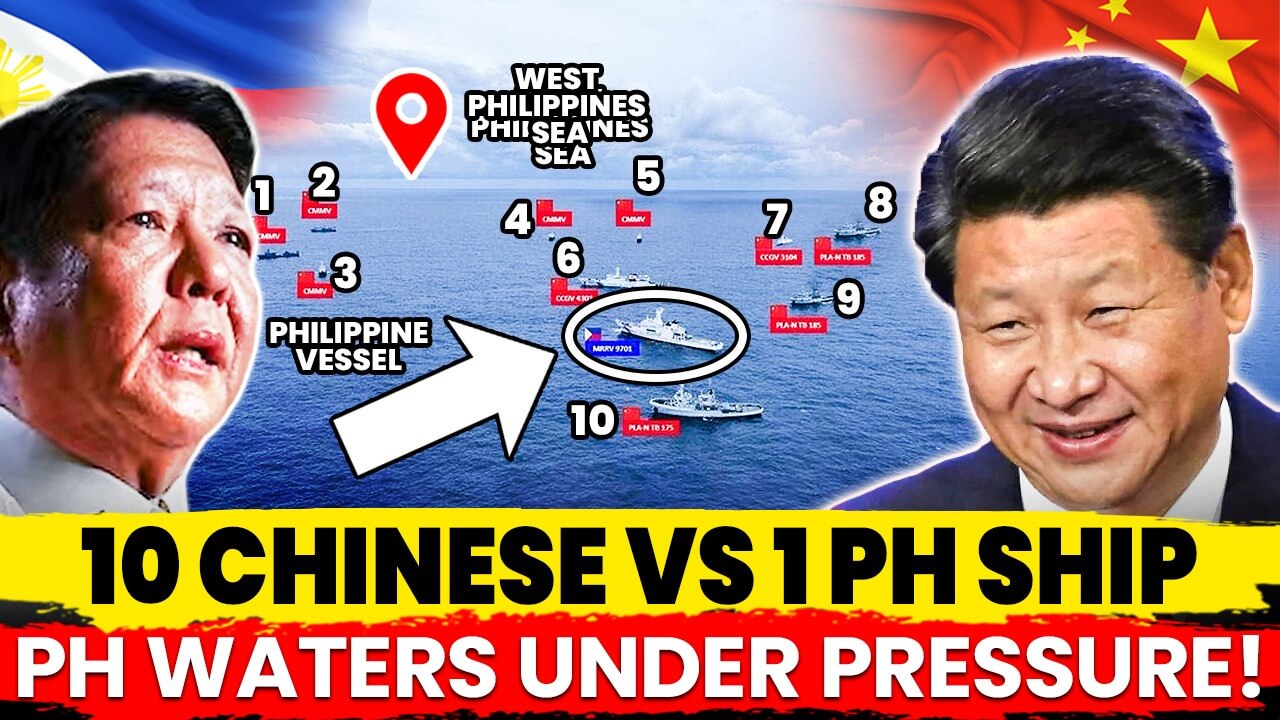“They’ve arrived.” In the command center near Manila Bay, Defence Secretary Gilberto Teodoro Jr. slams a report onto the table. Across from him, General Romeo Brawner leans forward: “Philippines just received its second battery of BrahMos missiles, 290 km range, supersonic, just two months after the first.” Outside, naval officers track live feeds from the South China Sea. The tension is palpable.
“That changes everything,” Teodoro responds, eyes sharp. “China’s maritime militia will now have to think twice before entering our EEZ.” This is not hypothetical. In April 2025, the Philippines took delivery of a second BrahMos battery from India, part of a $375 million 2022 deal, sharpening its coastal defenses just as tensions with Beijing escalate over espionage claims and aggressive maritime moves
At sea, another element of the balancing act is unfolding: the BRP Miguel Malvar, the lead corvette of a new South Korean-built frigate class, was commissioned in May 2025, bolstering the navy’s offshore presence Meanwhile, beneath the waves, Manila is quietly fast-tracking diesel-electric submarines, part of its Re‑Horizon 3 modernization phase, with proposals out from France, Spain, South Korea, and Germany.
Back in the joint Balikatan exercise zone in Zambales, U.S. forces have deployed NMESIS and the Typhon medium-range missile system. For the first time ever, integrated air and missile defense simulations are being run alongside Philippine units, President Marcos Jr. even visited the site
Modernizing the Armed Forces
“We’re not just upgrading, we’re transforming,” declared Armed Forces of the Philippines (AFP) Chief of Staff Gen. Romeo Brawner Jr. in a high-level press briefing earlier this year. His words echoed a clear shift in doctrine: from counterinsurgency to external defense. Under the ongoing ₱2 trillion Horizon 3 modernization program (2023–2028), the Philippines is pushing beyond past limitations, acquiring high-tech platforms, revitalizing domestic production, and anchoring its defense on robust international partnerships.
The Philippine Air Force (PAF) is emerging as a credible regional actor. With the acquisition of 12 FA-50PH multi-role fighter jets from South Korea, the air force regained its supersonic strike capability after decades. These jets, which have proven their utility in maritime drills near Palawan, are just the beginning. In recent years, the PAF added 21 refurbished UH-1H helicopters, 16 brand-new S-70i Black Hawks, six T129 ATAK helicopters from Turkey, and three C-295 transport aircraft. Ground-based air defense has also seen progress with three Israeli-made SPYDER missile systems now deployed. According to Brawner, “We’re in advanced talks to acquire 20 F-16V Block 70/72 fighters. If successful, this will define the next era of Philippine air deterrence.”
Meanwhile, the Philippine Navy is undergoing a surface and subsurface renaissance. Two South Korean-made guided missile frigates, BRP Jose Rizal and BRP Antonio Luna, were commissioned in 2020 and 2021, respectively, both equipped with anti-ship and anti-submarine capabilities, 3D radar, and vertical launch systems in future upgrades. In 2024 and 2025, the Navy began receiving two brand-new guided-missile corvettes, BRP Miguel Malvar and BRP Diego Silang, as part of a ₱28 billion contract with Hyundai. These will be complemented by six offshore patrol vessels (OPVs), expanding the Navy’s blue-water reach.
Speed and precision in coastal defense have also improved. Six fast attack interdiction crafts (FAICs) from Israel, four armed with Spike-NLOS missiles capable of pinpoint strikes up to 25 km, are now operational. At the same time, the country made headlines globally by becoming the first foreign buyer of the BrahMos supersonic cruise missile system from India. “These missiles can hit a warship from 290 kilometers away in less than five minutes,” a Navy spokesperson noted during the April 2025 deployment near Luzon. It’s a bold statement, one clearly aimed at deterring incursions in the West Philippine Sea.
Parallel to acquisitions, the Department of National Defense has prioritized local capability. The Philippines now boasts over 120 operational shipyards, 20 of which are certified as Class A. Technology transfer agreements with Israel and South Korea are allowing Filipino engineers to assemble, maintain, and eventually manufacture key naval platforms. The AFP also announced plans to co-develop weapons systems domestically by 2026, including small arms, UAVs, and radar units. “We are laying the foundation for an indigenous defense ecosystem,” Defense Secretary Gilberto Teodoro emphasized. “Strategic autonomy starts here, at home.”
Lastly, no modern military stands alone. The Philippines has elevated defense diplomacy across the Indo-Pacific. In April 2024, the annual Balikatan exercises with the U.S. hit a record scale with over 17,000 troops. For the first time ever, U.S. NMESIS and Typhon missile systems were deployed on Philippine soil, testing live coastal defense operations in Zambales. Meanwhile, trilateral security dialogues with Japan and Australia have intensified, with plans for more integrated patrols, joint naval drills, and rapid response coordination. In Congress, defense spending hit a new peak in 2025, with ₱50 billion allocated just for modernization.
Navigating the South China Sea
“They’ve built another structure at Escoda Shoal,” came the urgent report to Western Command in Palawan, June 2025. Satellite imagery confirmed it, another suspected Chinese maritime outpost rising inside the Philippines’ Exclusive Economic Zone (EEZ). For Manila, these are not isolated events; they are part of a larger campaign of gray-zone aggression, and the stakes have never been higher.
The Philippines’ territorial dispute with China in the South China Sea, particularly in the West Philippine Sea region, remains one of the most contentious flashpoints in Southeast Asia. Despite a landmark 2016 ruling by the Permanent Court of Arbitration invalidating China’s sweeping “nine-dash line” claims, Chinese vessels continue to intrude into Philippine waters, often deploying maritime militia boats near Second Thomas Shoal and Scarborough Shoal. These incursions have prompted increasingly assertive responses from the Armed Forces of the Philippines (AFP).
Enter the country’s modernization program. With supersonic BrahMos missiles now stationed along Luzon’s western coast, new offshore patrol vessels patrolling contested waters, and enhanced surveillance through long-range drones and radar systems, the AFP is strengthening its maritime shield. “This is about asserting our sovereign rights, not provoking conflict,” clarified National Security Adviser Eduardo Año during a recent naval commissioning ceremony. The FAICs and Jose Rizal-class frigates now serve not only as deterrents but as key tools in upholding maritime domain awareness.
Yet deterrence is only half the equation. The Philippines is also walking a diplomatic tightrope, working closely with ASEAN neighbors, the United States, Japan, and Australia to maintain regional peace while asserting legal maritime entitlements. President Ferdinand Marcos Jr. has reiterated that the Philippines will not yield “a single square inch” of territory, but has also emphasized dialogue over escalation. Recent joint patrols with the U.S. Navy and trilateral defense drills with Tokyo and Canberra underscore Manila’s strategic balancing act: one that combines credible defense with proactive diplomacy.
The South China Sea remains a volatile arena, but the Philippines is no longer just reacting. It is navigating, assertively, deliberately, and with new tools in hand.
Regional Security and Beyond
“We may be a small country,” President Ferdinand Marcos Jr. said at the 2025 Shangri-La Dialogue in Singapore, “but we stand tall in defending what is ours, guided by international law, not power projection.” His statement resonated beyond the ballroom. It symbolized the Philippines’ transition from a traditionally inward-looking military posture to a rising regional security stakeholder.
In recent years, the Philippines has emerged as a vital actor in promoting peace and stability across the Indo-Pacific. Its strategic location, straddling the South China Sea and the Pacific, makes it a natural frontline state in both regional deterrence and freedom of navigation operations. As China’s maritime assertiveness intensifies, the modernization of the Armed Forces of the Philippines (AFP) has directly enhanced Manila’s regional influence. The acquisition of BrahMos missiles, advanced surface combatants, FA-50PH jets, and maritime radar systems not only protect Philippine territory, they also contribute to collective deterrence across ASEAN and the broader security architecture involving the U.S., Japan, and Australia.
Second Thomas Shoal Resupply Mission: Did Manila Ask Beijing?
Through these developments, the Philippines has positioned itself as a responsible partner in upholding a rules-based international order. It continues to invoke the 1982 UNCLOS and the 2016 Hague tribunal ruling to champion maritime rights not only for itself, but for all claimant states. This principled stance strengthens its moral authority in regional forums and bolsters its credibility as a cooperative, law-abiding state actor.
Crucially, the AFP’s growing interoperability with allied forces, seen in expanded Balikatan exercises, trilateral maritime patrols, and disaster response coordination, highlights a broader shift: from recipient of security assistance to provider of regional stability. “We’re not here to pick fights,” Defense Secretary Gilberto Teodoro remarked during a joint ASEAN defense ministers’ meeting. “We’re here to uphold peace, firmly, and with resolve.”
The Future of Philippine Defense
“This is a marathon, not a sprint,” Defense Secretary Gilberto Teodoro remarked in a recent congressional hearing. His words reflect the delicate balance the Philippines must strike as it forges ahead with defense modernization, ensuring readiness without compromising national development.
Despite bold advances, serious challenges remain. Funding is a perennial concern. With ₱2 trillion allocated for Horizon 3 over the next five years, the government must constantly justify this massive expenditure alongside pressing social needs: healthcare, education, infrastructure, and poverty reduction. Beyond budget constraints, there’s the complexity of building a sustainable domestic defense industry. While shipbuilding has shown promise and technology transfer deals are underway, the Philippines must still overcome gaps in R&D, manufacturing capabilities, and defense logistics expertise.
Yet, the opportunity is clear. A modern military is not just about projecting strength, it’s about ensuring sovereignty, disaster resilience, and long-term national security. Every radar deployed, every aircraft commissioned, and every Filipino technician trained reduces the country’s strategic vulnerability. More importantly, these investments position the Philippines as a more capable and credible partner in regional security, one that can help uphold peace and stability in an increasingly volatile Indo-Pacific.
The commitment is there. From leadership to legislature, there is consensus: defense modernization is not optional, it’s essential. And with growing public awareness, there is momentum behind the idea that a strong defense need not come at the cost of development, but can instead support it by protecting critical infrastructure, securing trade routes, and enabling rapid disaster response.
The future of Philippine defense depends on what is done today. Continued investment, innovation, and cooperation will be the pillars of a truly resilient national defense posture. The time to act is now, before the next crisis comes uninvited to our shores.



